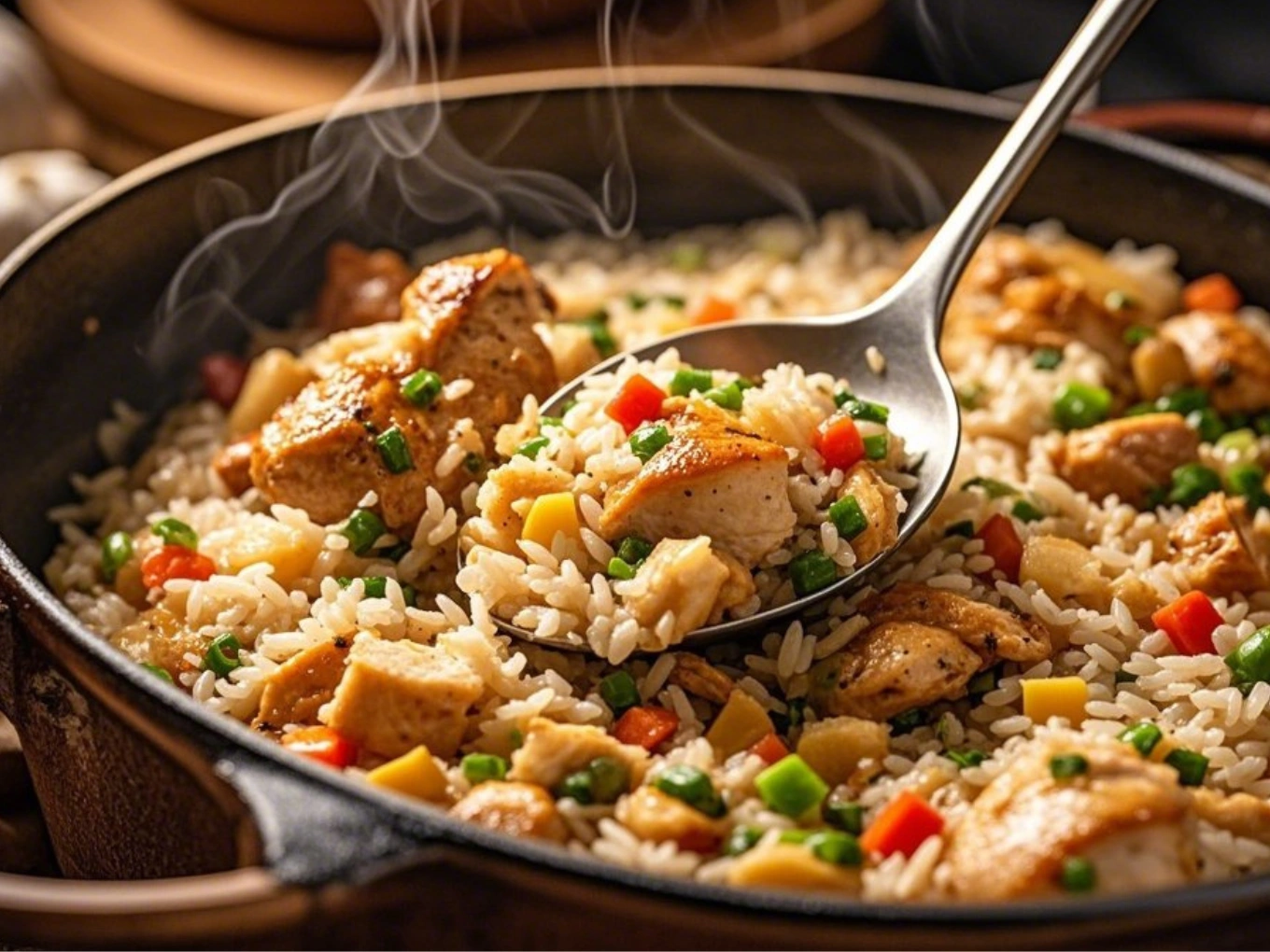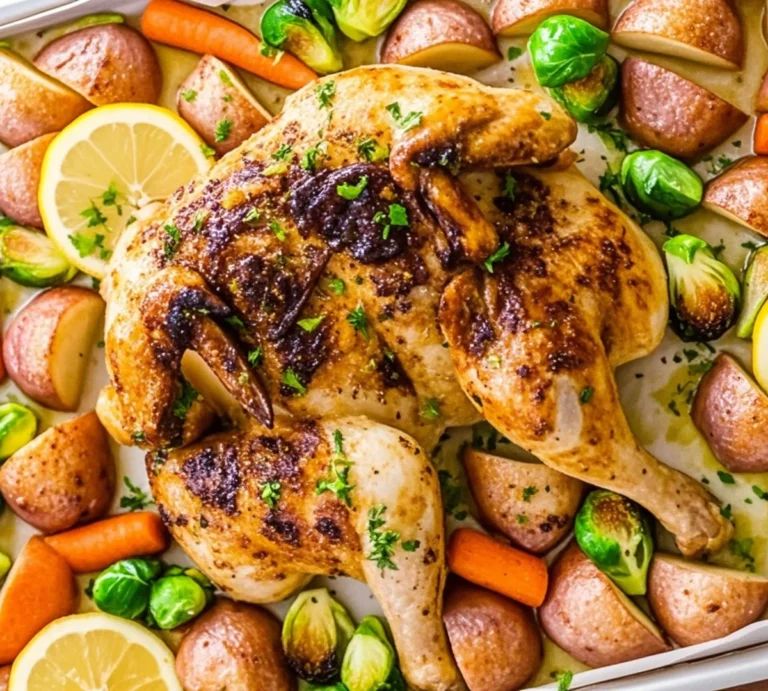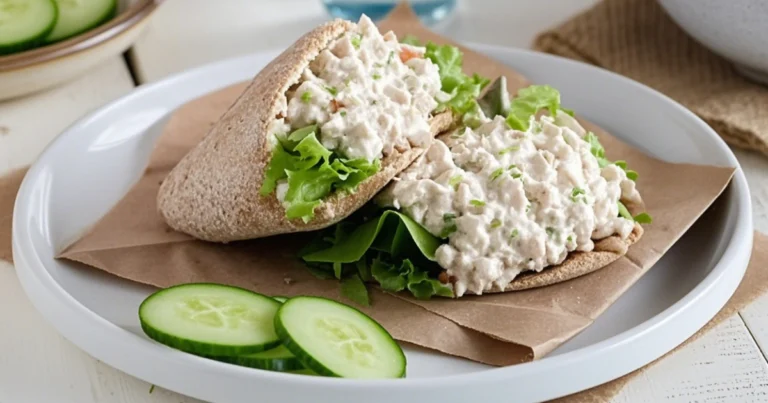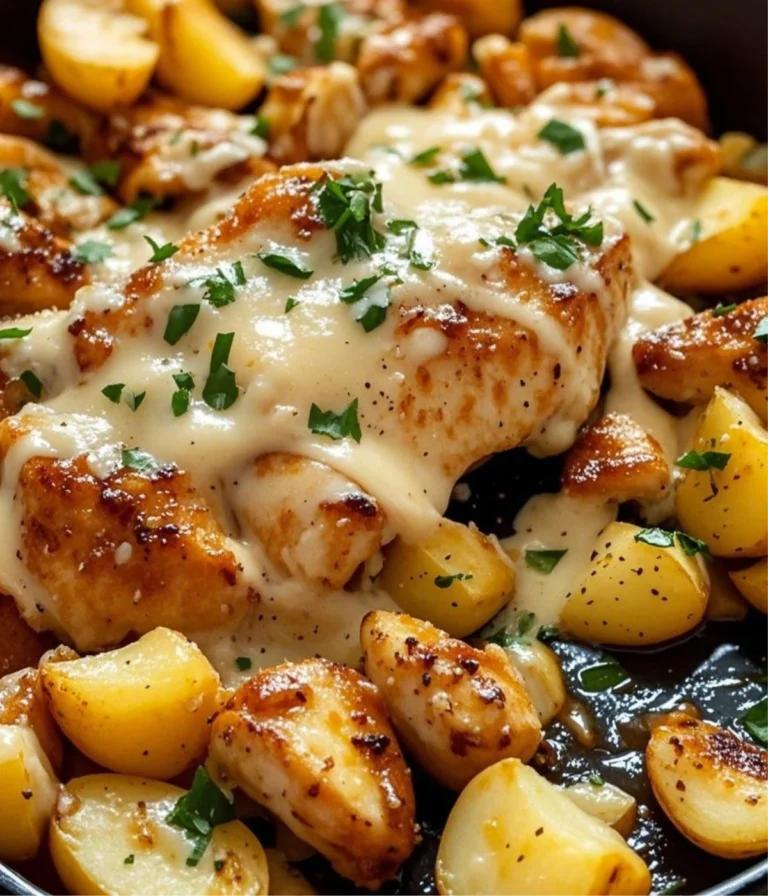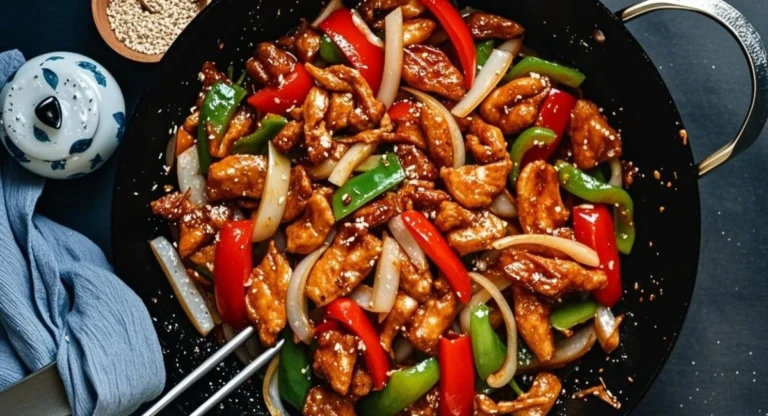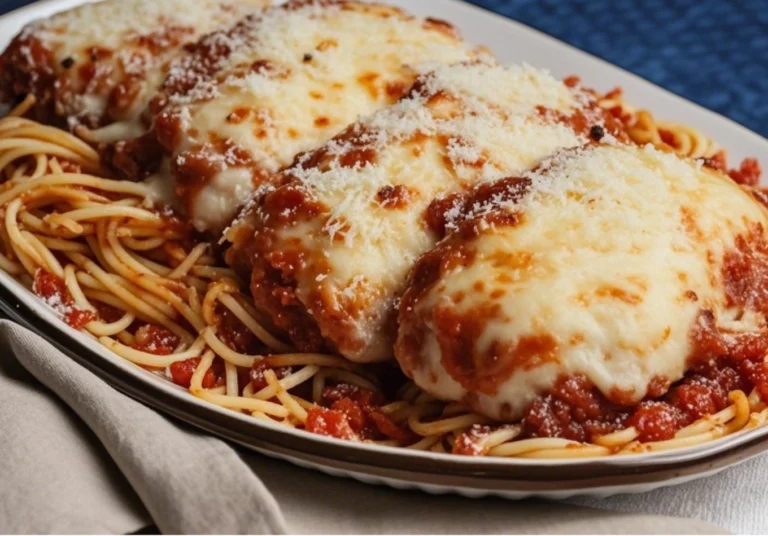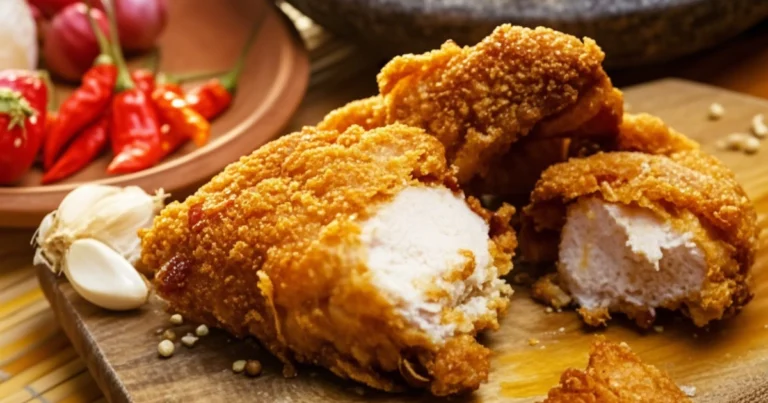Easy One Pot Chicken and Rice Recipe – Flavorful Family Dinner
Table of Contents
The kitchen timer beeps insistently as you rush through the door, briefcase or backpack still in hand, while hungry voices call out from the living room. We’ve all experienced that familiar weeknight panic – the one where exhaustion collides with responsibility, and somehow, a nourishing meal needs to materialize despite your depleted energy reserves.
This one pot chicken and rice recipe isn’t merely another dinner option; it’s your secret weapon against chaotic evenings. Between the tender morsels of chicken nestled among fluffy grains and vibrant vegetables, you’ll discover something beyond sustenance – a harmonious blend that delivers warmth, comfort, and satisfaction without the dreaded sink full of dishes afterward.

Why One Pot Meals Are a Family Game-Changer
The meteoric rise of one pot cooking across kitchens nationwide isn’t merely a passing trend but rather a practical revolution in home cooking. These simplified culinary creations have transformed evening meal preparation, particularly for households juggling packed schedules, multiple commitments, and the ever-present challenge of feeding hungry family members something nutritious without surrendering your entire evening to kitchen duty.
Beyond the obvious convenience factor lies a culinary secret that experienced cooks have long understood: when ingredients simmer together in a single vessel, they engage in a beautiful dance of flavor development. The chicken releases its savory essence while absorbing the aromatic compounds from herbs and vegetables. Meanwhile, the rice drinks in this enriched cooking liquid, transforming from bland grains into flavor-packed morsels that carry the essence of everything they’ve been cooked alongside.
Many families report that this particular chicken and rice recipe has earned coveted “rotation status” – joining the elite collection of meals requested repeatedly by even the pickiest eaters. The combination of familiar ingredients with a preparation method that creates minimal disruption to household flow makes it unsurprising that this dish has become a cornerstone of contemporary family dining.
Perfect One Pot Chicken and Rice: The Essential Ingredients
The Protein Star
Selecting the appropriate chicken cuts fundamentally influences the success of your one pot creation. While virtually any chicken piece can technically work, certain options yield superior results in this cooking method.
Boneless, skinless chicken thighs reign supreme in one pot preparations, offering several distinct advantages. Their inherent moisture and higher fat content forgive slight overcooking, maintaining tenderness even when left on the heat a few minutes too long. Additionally, dark meat develops deeper flavor compounds during cooking, infusing the entire dish with richness.
For households watching their budget, chicken thighs also represent an economical choice without compromising on taste. When meticulously trimmed of excess fat and cut into relatively uniform pieces, they cook evenly alongside the rice, eliminating the common problem of perfectly cooked rice but undercooked chicken (or vice versa).
While boneless options streamline the eating experience, bone-in thighs can elevate flavor profiles even further. Should you opt for bone-in pieces, simply extend your cooking time by approximately 5-7 minutes and verify doneness with a meat thermometer (165°F/74°C indicates safety).
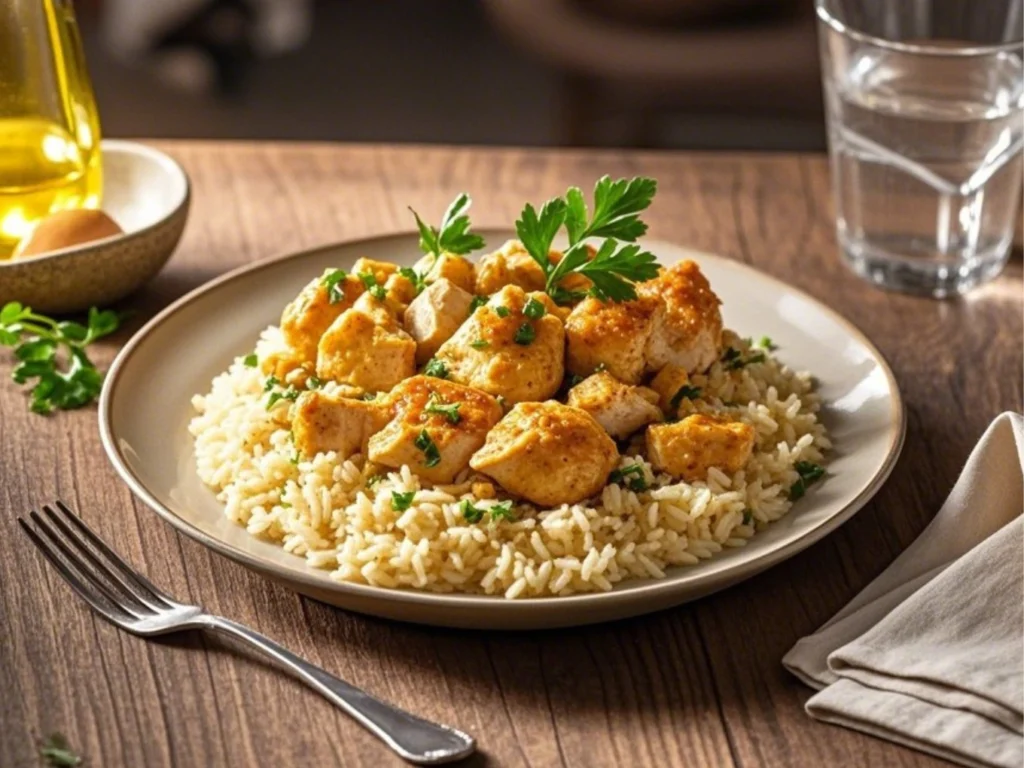
The Rice Foundation
The rice selection constitutes perhaps the most critical decision in your one pot journey, as different varieties absorb liquid at varying rates and maintain distinctly different textures when cooked.
Long-grain white rice varieties like basmati or jasmine prove ideal candidates, consistently yielding fluffy, separate grains rather than clumping together. These varieties typically maintain a 1:1.5 or 1:1.75 rice-to-liquid ratio, allowing precise measurement for properly hydrated results.
Shorter grain varieties tend toward stickiness, which, while delicious in certain applications, generally creates a texture disharmony when paired with tender chicken pieces in this particular preparation.
Understanding absorption ratios prevents the dreaded “mushy rice syndrome” that plagues many one pot attempts. Adjust your liquid measurements according to your specific rice choice:
- Long-grain white rice: 1 cup rice to 1.5-1.75 cups liquid
- Basmati: 1 cup rice to 1.5 cups liquid
- Jasmine: 1 cup rice to 1.5 cups liquid
- Medium-grain white rice: 1 cup rice to 1.5-2 cups liquid
Remember that additional ingredients like vegetables contribute moisture during cooking, necessitating slight reductions in added liquid compared to cooking rice alone.
Building Flavor Profiles For One Pot Chicken and Rice
The foundation of your flavor architecture begins with aromatics – those magical ingredients that release complex compounds when heated in fat. The classic mirepoix combination (onions, carrots, celery) works beautifully, though countless variations exist across culinary traditions.
Your herb selection significantly influences the final character of your dish. Fresh herbs added at the beginning of cooking (rosemary, thyme) provide background notes, while those added just before serving (parsley, cilantro) deliver brightness and visual appeal.
The cooking liquid perhaps most dramatically affects your flavor outcome. While commercial broths offer convenience, homemade stock elevates this simple dish to remarkable heights. Even a compromise approach – enhancing store-bought broth with additional aromatics during cooking – results in noticeable improvement.
Ingredient Table:
| Ingredient | Quantity | Notes |
|---|---|---|
| Chicken thighs | 1.5 lbs | Boneless, skinless preferred |
| Long grain rice | 1.5 cups | Rinsed until water runs clear |
| Chicken broth | 2.5 cups | Low sodium recommended |
| Onion | 1 medium | Finely diced |
| Bell peppers | 2 | Red and green for color contrast |
| Garlic | 4 cloves | Minced or pressed |
| Olive oil | 2 tbsp | For sautéing |
| Paprika | 1 tbsp | Sweet or smoked variety |
| Dried oregano | 1 tsp | Mediterranean flavor base |
| Bay leaves | 2 | Remove before serving |
| Salt and pepper | To taste | Adjust according to broth saltiness |
| Fresh parsley | 1/4 cup | Chopped, for garnish |
| Lemon | 1 | Cut into wedges for serving |

Equipment Needed for Perfect One Pot Chicken and Rice
Choosing Your Cooking Vessel
The container that holds your culinary creation profoundly influences the outcome, affecting everything from heat distribution to moisture retention.
Dutch ovens, with their heavy construction and tight-fitting lids, create the ideal environment for this cooking method. Their substantial thermal mass maintains consistent temperatures, preventing the scorching that often occurs with thinner pots. The elevated sides accommodate generous portions while minimizing spillover during stirring.
Deep, wide skillets with fitted lids present a worthy alternative, particularly those measuring 12-14 inches in diameter with at least 3-inch sides. The increased surface area contacting your stovetop accelerates the initial searing phase while providing ample space for ingredients to cook evenly rather than steaming from overcrowding.
Regarding materials, cast iron lined with enamel combines the excellent heat retention of traditional cast iron with a non-reactive surface ideal for acidic ingredients. Multiply stainless steel with an aluminum core represents another excellent choice, offering superior heat conductivity with dishwasher-safe convenience.
Step-by-Step One Pot Chicken and Rice Method
Preparation Phase
Proper preparation transforms chaotic cooking into a methodical process yielding consistent results. Begin by patting your chicken pieces completely dry with paper towels – this seemingly minor step dramatically improves browning, which directly enhances flavor through Maillard reaction development.
When cutting vegetables, maintain relatively uniform sizes to ensure even cooking. Diced onions and peppers around 1/4-inch provide textural interest without requiring extended cooking times. Garlic benefits from slightly smaller dimensions to prevent bitter compounds from developing during extended cooking.
Establishing your mise en place – preparing and organizing all ingredients before heat touches pot – substantially reduces mid-cooking stress. Measure liquids, portion spices, and prepare garnishes ahead of time, arranging them in order of use for seamless execution.
The Critical Cooking Sequence
- Searing the chicken establishes the flavor foundation for your entire dish. Heat your chosen vessel over medium-high heat until a droplet of water skitters across the surface. Add oil, then carefully arrange chicken pieces without overcrowding. Allow them to develop a golden-brown crust before turning – approximately 4-5 minutes per side. This isn’t merely for appearance; this browning creates hundreds of complex flavor compounds that will eventually permeate your entire dish.
- Once properly seared, temporarily remove chicken to a plate. In the flavorful fat remaining, build your aromatic foundation. Add onions first, cooking until translucent but not browned (approximately 3 minutes), then incorporate garlic and bell peppers for an additional minute. This staged addition prevents more delicate aromatics from burning while ensuring each releases its optimal flavor compounds.
- The brief but crucial rice toasting phase follows. Add your rinsed and drained rice directly to the aromatic mixture, stirring constantly for 1-2 minutes until individual grains appear slightly translucent around the edges. This short exposure to direct heat modifies the starch structure, resulting in fluffier final texture and creating subtle nutty notes.
- Liquid incorporation represents a critical juncture. Add broth gradually while scraping the pot bottom with a wooden spoon, releasing caramelized bits (fond) containing concentrated flavor. Once all liquid is added, return chicken pieces to the pot, nestling them partially into the rice mixture without fully submerging.
- The perfect simmer technique differentiates outstanding results from merely acceptable ones. Bring the mixture to a gentle boil, then immediately reduce heat to achieve the barest possible simmer – just a few bubbles breaking the surface occasionally. Cover with a tight-fitting lid and resist the powerful temptation to peek during the 18-20 minute cooking period. Each lid removal releases accumulated steam, potentially resulting in undercooked rice.
- The often-overlooked resting period allows for carryover cooking and moisture redistribution throughout your dish. After the cooking time elapses, remove from heat while maintaining the lid’s seal. Allow 5-10 minutes of undisturbed rest before serving. This patience rewards you with perfectly cooked rice and chicken infused with developed flavors.
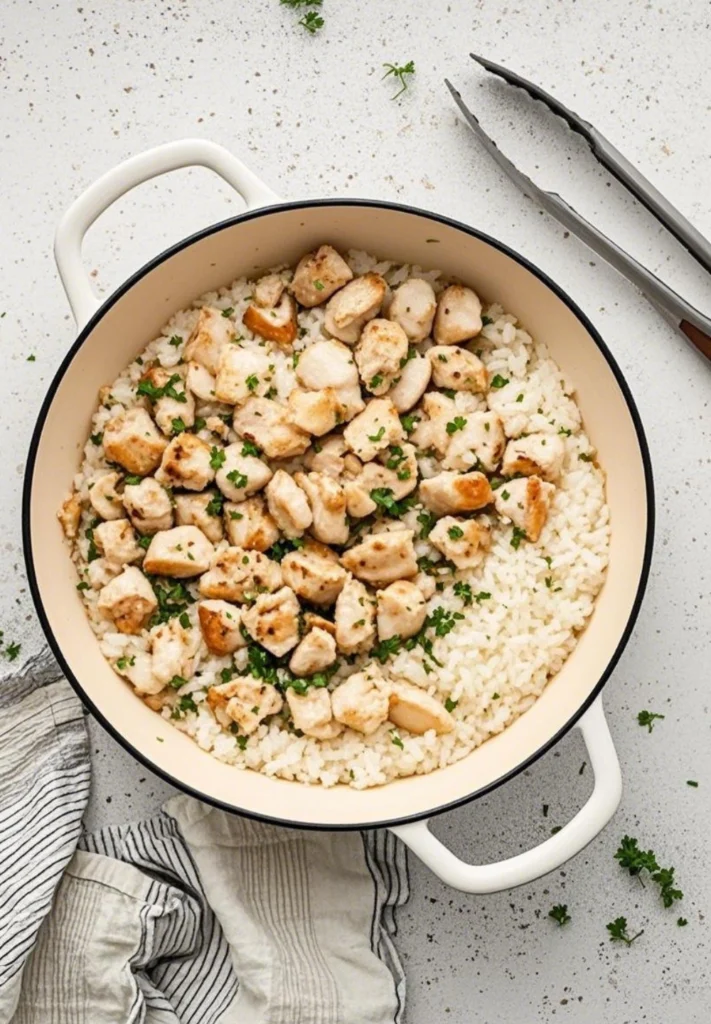
Cooking Process Table:
| Step | Time | Temperature | Action |
|---|---|---|---|
| Sear chicken | 5-7 minutes | Medium-high | Until golden brown on both sides |
| Sauté aromatics | 3-4 minutes | Medium | Until onions are translucent |
| Toast rice | 1-2 minutes | Medium | Stir constantly to prevent burning |
| Simmer covered | 18-20 minutes | Low | No peeking! |
| Rest | 5-10 minutes | Off heat | Keep lid on |
Troubleshooting Your One Pot Chicken and Rice
Common Issues and Solutions
Even experienced cooks occasionally encounter challenges with one pot meals. When rice remains undercooked but chicken has reached proper temperature, a rescue approach involves removing fully cooked chicken pieces, adding 1/4 cup additional liquid to remaining contents, and continuing covered cooking for 3-5 additional minutes before reuniting components.
Conversely, perfectly cooked rice paired with undercooked chicken requires a different strategy. Remove rice to a separate bowl (covering to retain heat), then continue cooking chicken in the original vessel with a small amount of additional liquid until it reaches safe temperature.
Textural imbalances – dishes that finish too dry or excessively wet – can typically be corrected during the resting phase. For overly dry results, sprinkle 2-3 tablespoons of hot broth or water over the surface before replacing the lid. Too much moisture requires briefly cooking uncovered over low heat to evaporate excess liquid.
Flavor development sometimes needs final adjustments. Brightness can be added through freshly squeezed citrus juice or vinegar (start with 1 teaspoon and adjust upward). Depth might require additional salt, soy sauce, or a few drops of fish sauce. Heat balance adjusts easily with additional black pepper or red pepper flakes.
Make It Your Own: Variations on Classic One Pot Chicken and Rice
Mediterranean Inspiration
Transform your base recipe by incorporating Mediterranean flavors: add 1/2 cup pitted Kalamata olives and 1 tablespoon capers during the final 5 minutes of cooking. After resting, sprinkle with lemon zest and crumbled feta cheese. Fresh dill and mint make excellent garnish alternatives to parsley in this variation.
Tex-Mex Transformation
Create southwestern flair by replacing traditional seasonings with 1 tablespoon chili powder, 1 teaspoon cumin, and 1/2 teaspoon dried oregano. Substitute one bell pepper with a poblano chile for gentle heat, and add 1 cup corn kernels and 1 cup black beans (drained and rinsed) during the final 5 minutes of cooking. Serve with diced avocado, cilantro leaves, and lime wedges.
Asian-Inspired Twist
Develop Far Eastern flavors by incorporating 1 tablespoon grated fresh ginger alongside your garlic. Replace 1/2 cup of cooking liquid with coconut milk, and add 1 tablespoon soy sauce and 1 teaspoon fish sauce for umami depth. Snow peas, sliced water chestnuts, or diced bok choy make excellent vegetable additions. Finish with chopped cilantro, sliced scallions, and a sprinkle of toasted sesame seeds.
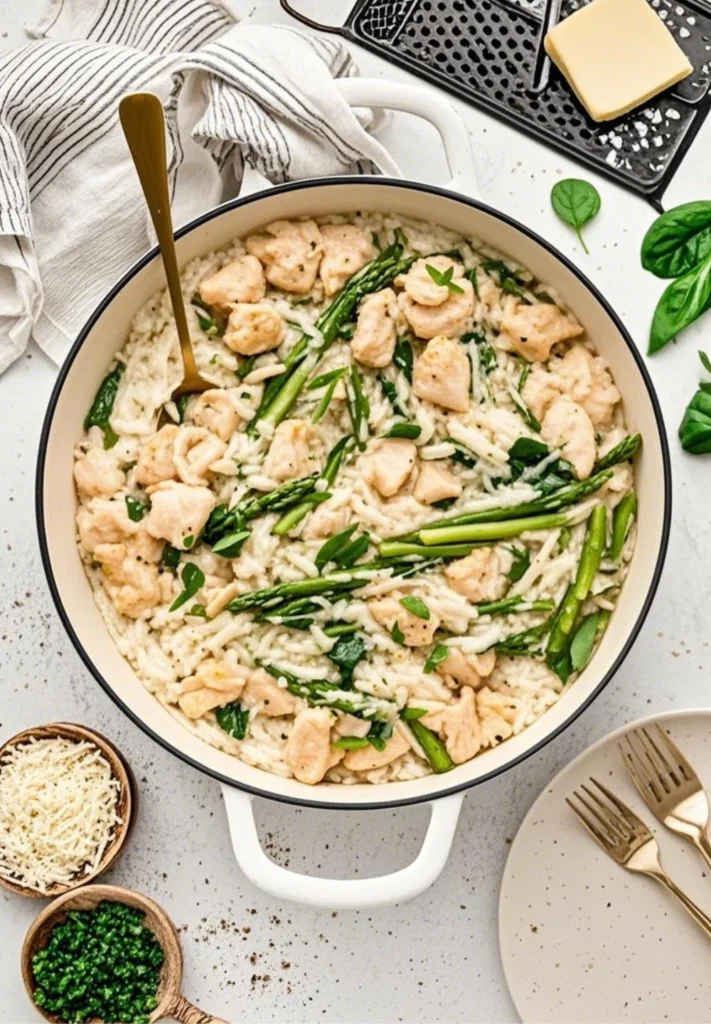
Meal Prep and Storage Guidelines for One Pot Chicken and Rice
Refrigeration Best Practices
This versatile dish excels as a make-ahead option when properly handled. Allow completely cooked one pot chicken and rice to cool until no longer steaming before refrigerating; large volumes benefit from spreading across a baking sheet to accelerate cooling.
Glass storage containers with airtight lids maintain freshness while preventing absorption of refrigerator odors. Portion according to your future needs – individual containers streamline grab-and-go lunches, while family-sized portions simplify dinner reheating.
When reheating, sprinkle 1-2 tablespoons water over each portion before covering, creating steam that restores moisture potentially lost during storage. Microwave reheating works well at 60% power for more even heating without edge drying. Alternatively, gentle stovetop reheating in a covered pan with a splash of broth maintains textural integrity better than high-heat methods.
Freezer-Friendly Tips
Freezing portions extends convenience even further, though texture changes slightly upon thawing. Individual portions frozen in vacuum-sealed bags or freezer-safe containers with minimal air space maintain quality up to three months.
Thaw overnight in your refrigerator rather than using countertop methods for food safety. Gentle reheating from the thawed state (never from frozen) preserves texture while ensuring even heating throughout. Adding fresh garnishes after reheating – additional herbs, a squeeze of citrus, or a drizzle of quality olive oil – revitalizes previously frozen portions remarkably well.
Nutritional Benefits of One Pot Chicken and Rice
This balanced meal delivers complete proteins through chicken, complex carbohydrates via rice, and valuable micronutrients from incorporated vegetables. The single-pot cooking method preserves water-soluble vitamins often lost when vegetables are boiled separately and drained.
The foundation recipe easily adapts to specific nutritional requirements. Boost fiber content by substituting brown rice (with adjusted cooking liquid and time). Incorporate additional vegetables – leafy greens stirred in during the final minutes add minimal calories while dramatically increasing nutritional density. Reduced-sodium adaptations work well by using homemade unsalted stock and enhancing flavor through herbs and spices rather than added salt.
Serving Suggestions
Family-Style Presentation
The vibrant colors and textures of this dish shine when presented in wide, shallow serving vessels that showcase its components. Garnishing elevates both appearance and flavor – consider a crown of freshly chopped herbs, lemon wedges arranged around the perimeter, or a light sprinkle of smoked paprika for color contrast.
While this complete meal requires no accompaniment, light side options enhance the dining experience without competing for attention. A simple green salad dressed with vinaigrette provides refreshing counterpoint to the warm, hearty main dish. Crusty bread serves wonderfully for capturing any remaining sauce.
Portion Control and Plating
Individual servings arranged thoughtfully transform this humble dish into an impressive presentation. A one-cup scoop of the chicken-rice mixture creates an attractive mound when placed slightly off-center on dinner plates. Position a few select chicken pieces atop the rice, then add visual interest with strategically placed herb sprigs or vegetable garnishes.
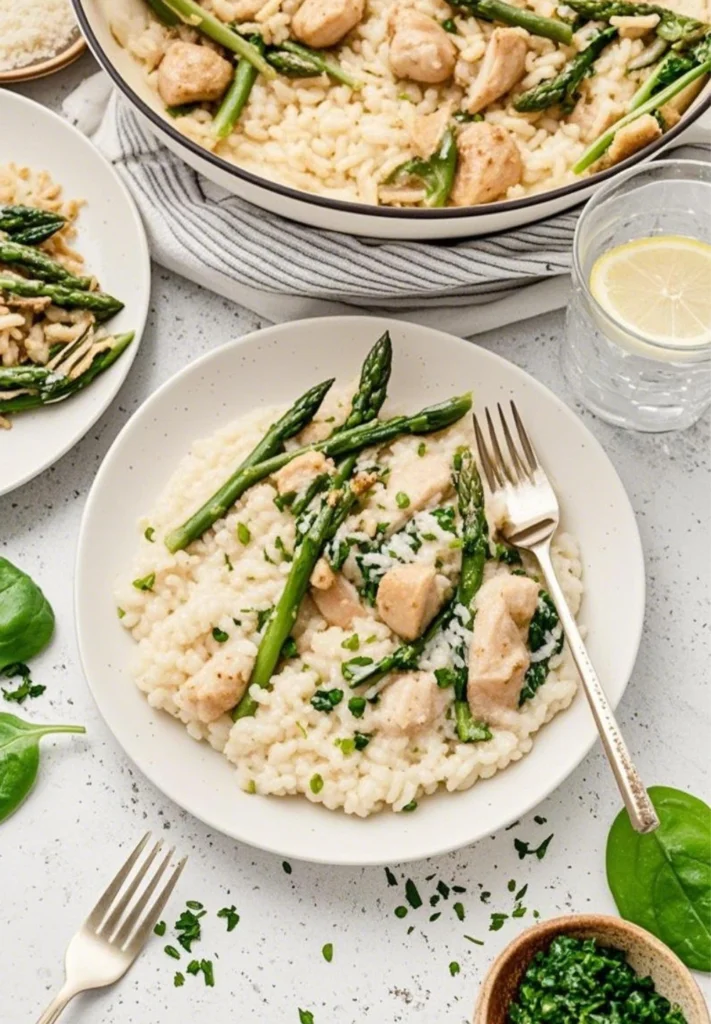
Conclusion
This versatile one pot chicken and rice creation transcends ordinary weeknight cooking, delivering extraordinary flavor with minimal effort and cleanup. The techniques shared here provide not merely a recipe but a template for countless variations tailored to your family’s preferences and available ingredients.
By mastering this fundamental approach – building flavors methodically, understanding proper ingredient ratios, and respecting critical cooking phases – you’ve added a valuable technique to your culinary repertoire. This knowledge extends well beyond a single dish, informing your overall approach to efficient, flavorful cooking.
Whether prepared as written or customized to your unique tastes, this humble yet remarkable recipe deserves regular appearance in your meal rotation. Its ability to satisfy varied palates while simplifying your kitchen workflow makes it the rare dish that truly deserves the overused description of “life-changing.” Next time you face the dinnertime dilemma of limited time but unwillingness to compromise on quality, remember that extraordinary meals can emerge from a single pot, minimal effort, and thoughtfully combined ingredients.
FAQs About One Pot Chicken and Rice
Can I use brown rice in this one pot chicken and rice recipe?
Yes, you can substitute brown rice, but you’ll need to make several adjustments. Increase the liquid to 2.5 cups per cup of rice and extend cooking time by approximately 15 minutes. For best results, partially cook the chicken separately before adding to the rice mixture during the final 20 minutes to prevent overcooking.
Is it possible to make this one pot chicken and rice recipe in an Instant Pot?
Absolutely! The one pot chicken and rice concept adapts perfectly to pressure cooking. Use the sauté function to complete the initial steps through rice toasting. Then seal and pressure cook on high for 5 minutes with 10 minutes natural release. This significantly reduces total cooking time while maintaining the flavor development benefits of traditional methods.
How can I make my one pot chicken and rice more flavorful?
Several techniques dramatically boost flavor profiles. Marinate chicken pieces for 2-4 hours before cooking using complementary flavor combinations. Replace commercial broth with homemade stock, or enhance store-bought versions by simmering with additional aromatics for 20 minutes before using. Finish the dish with fresh herb sprinkles, compound butter, or a squeeze of citrus juice to brighten all flavors.
Can I make this one pot chicken and rice recipe ahead of time?
This dish actually improves overnight as flavors meld and develop complexity during refrigeration. Prepare completely up to two days before serving, then refrigerate in an airtight container. When reheating, add a splash of broth to restore moisture, and cover tightly to create gentle steam that revitalizes both chicken and rice textures.
What vegetables work best in one pot chicken and rice?
Hardy vegetables that maintain structural integrity during extended cooking perform best. Bell peppers, carrots (thinly sliced), green beans, and corn kernels integrate seamlessly into the cooking process. Introduce quick-cooking vegetables like frozen peas, baby spinach, or halved cherry tomatoes during the final five minutes or the resting phase to preserve their color, texture, and nutritional value.
How do I prevent my rice from sticking to the bottom of the pot when making one pot chicken and rice?
Several preventative measures minimize sticking issues. First, ensure your pot has a heavy bottom for even heat distribution. The initial rice toasting step creates a protective coating on each grain. Maintain the lowest possible simmer rather than a vigorous boil during the covered cooking phase. Resist the urge to stir once the rice begins cooking, as this releases starches that promote sticking. Finally, the critical resting period allows any slightly attached grains to naturally release from the pot bottom.

